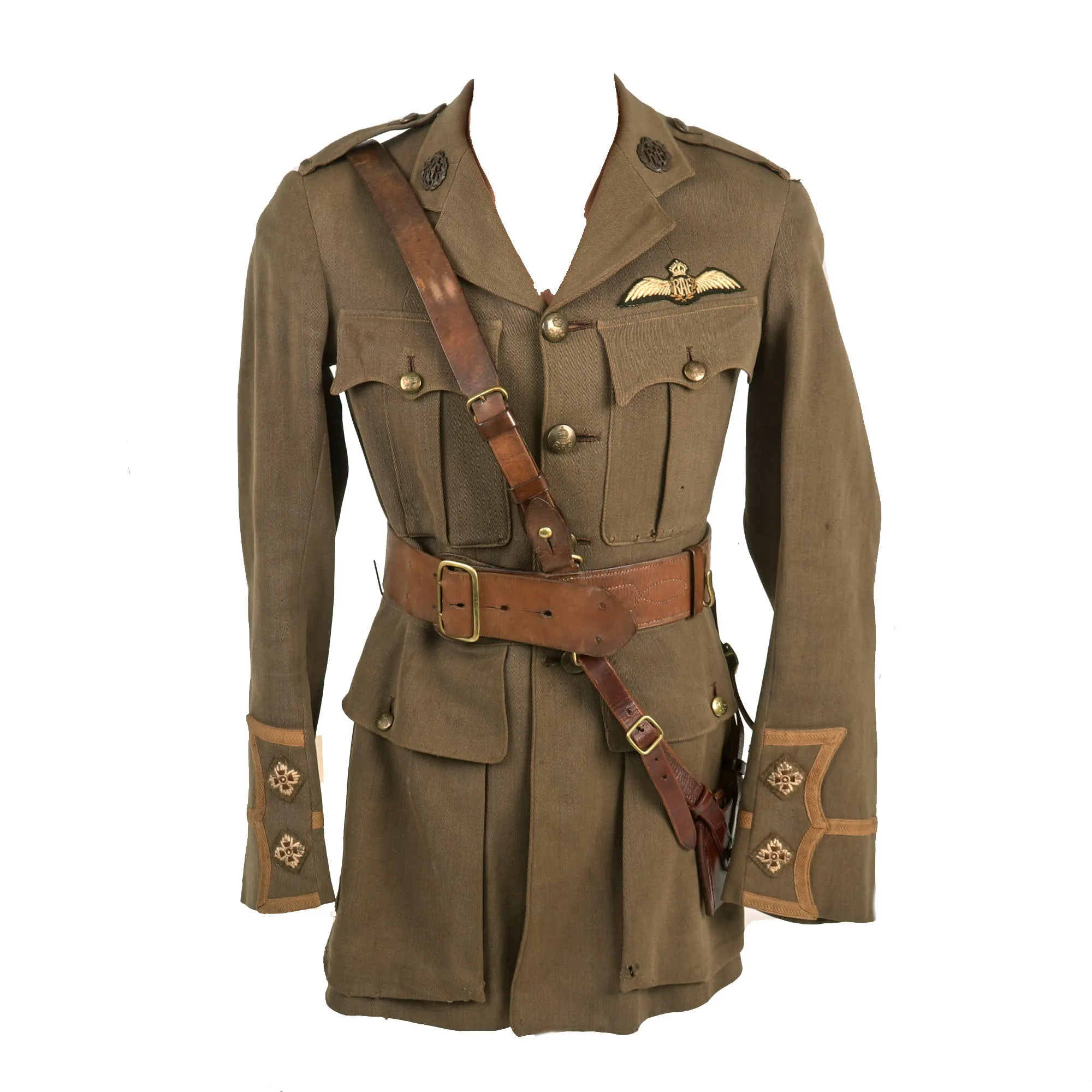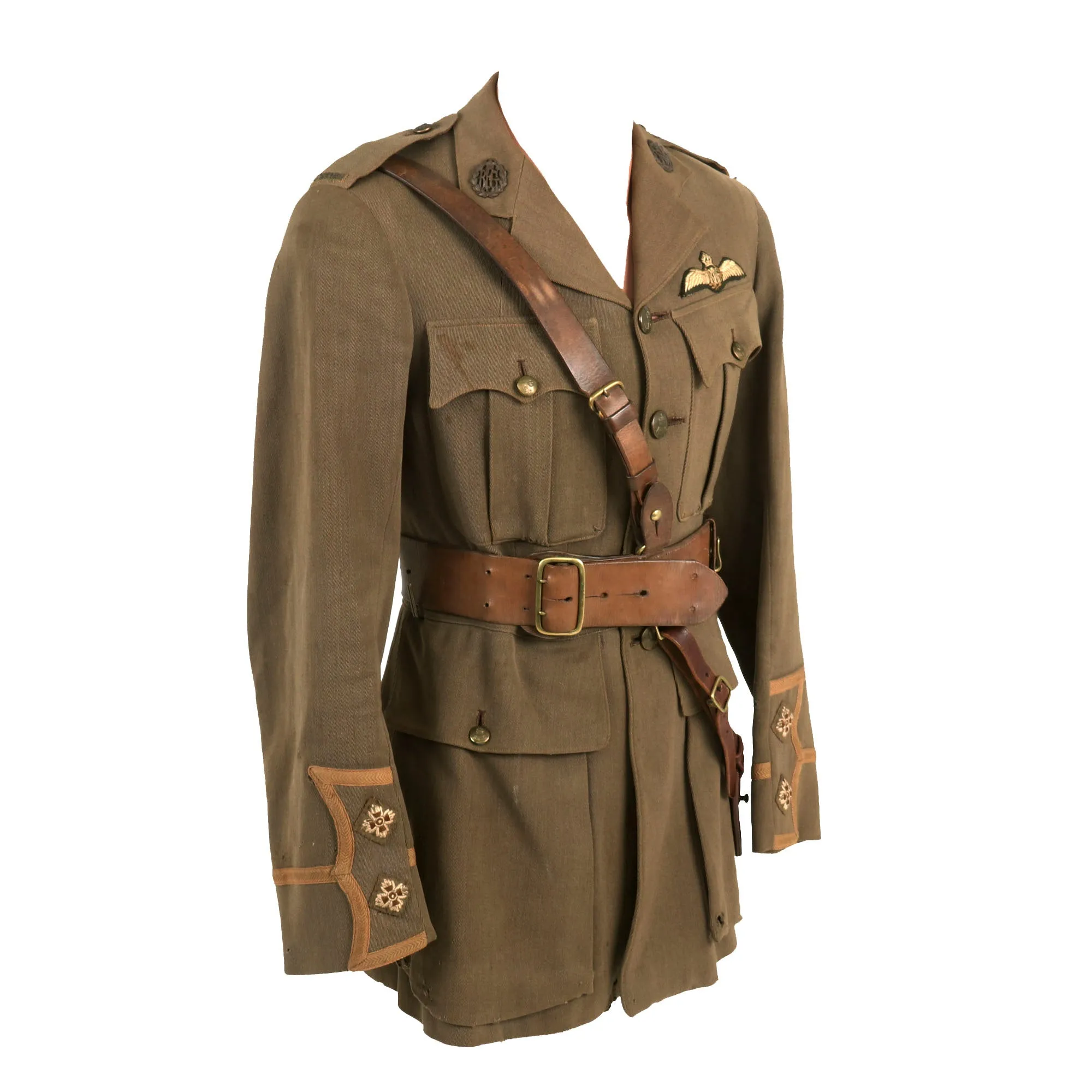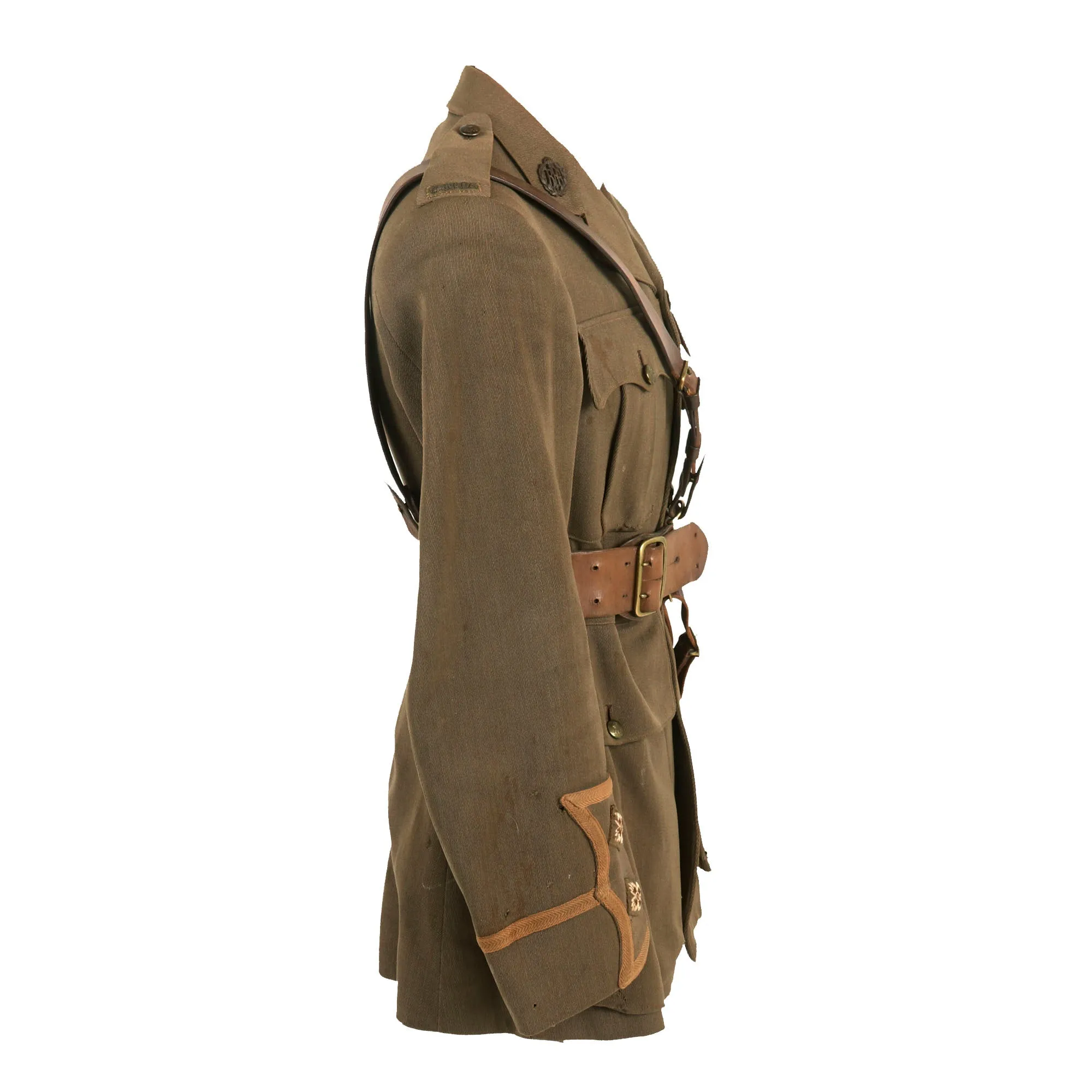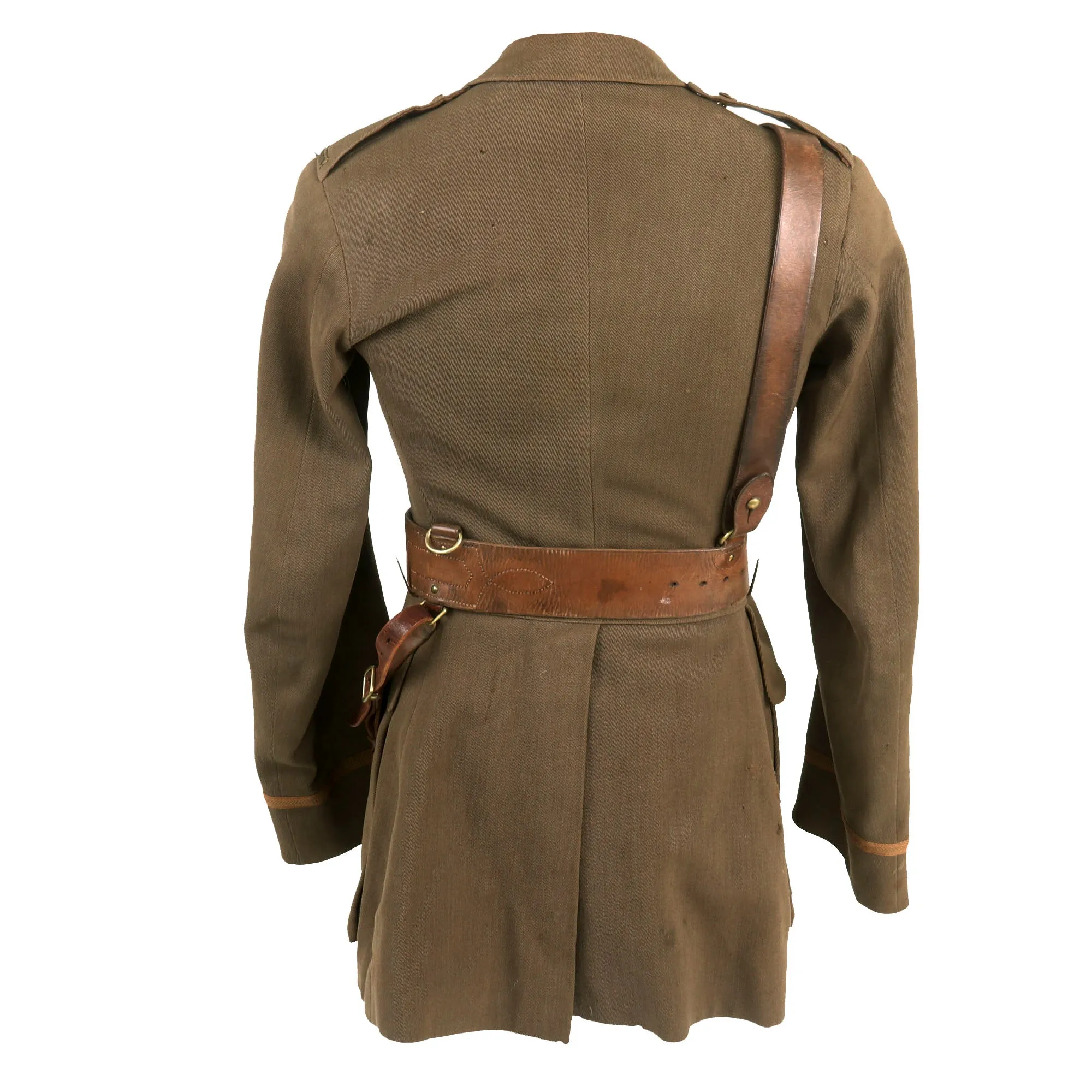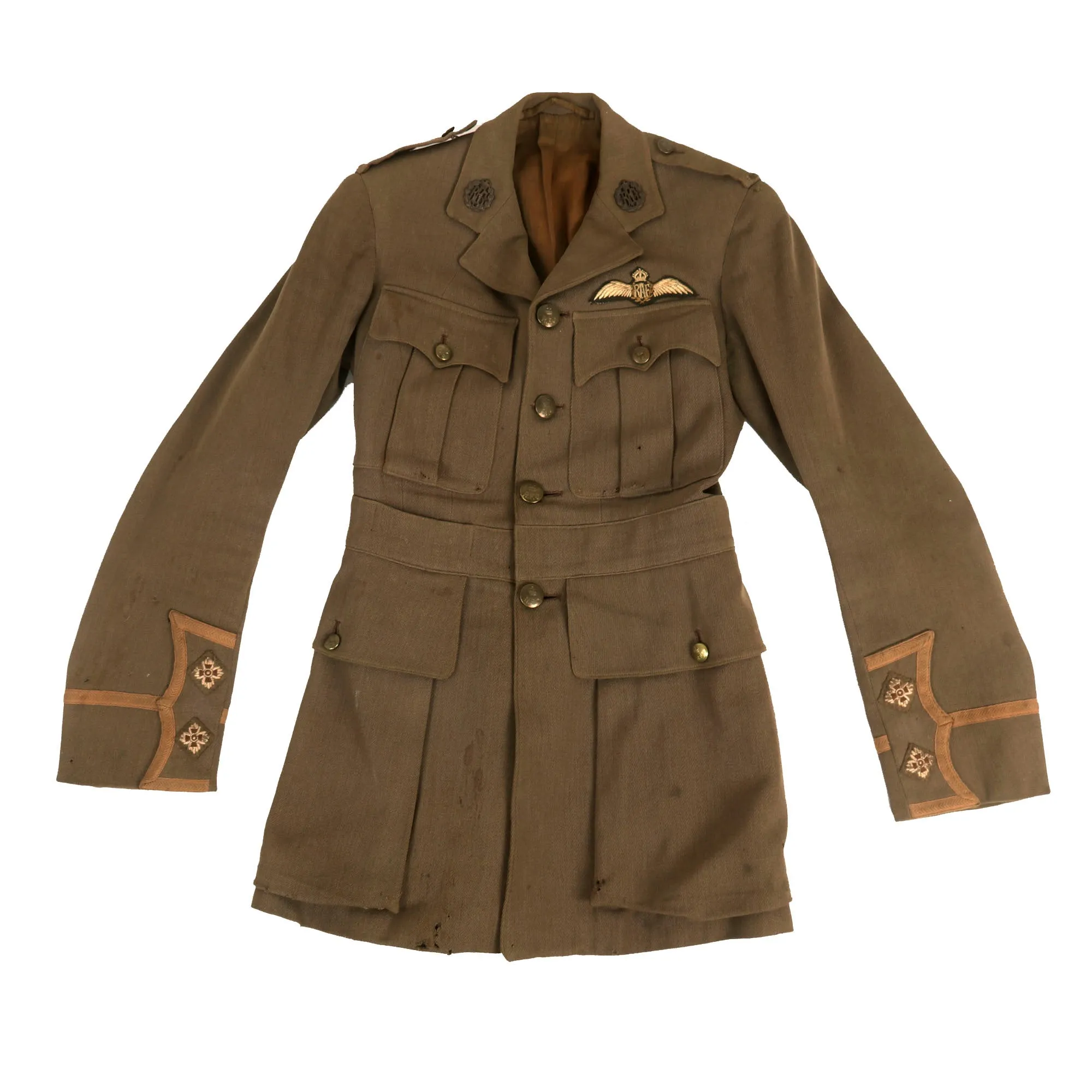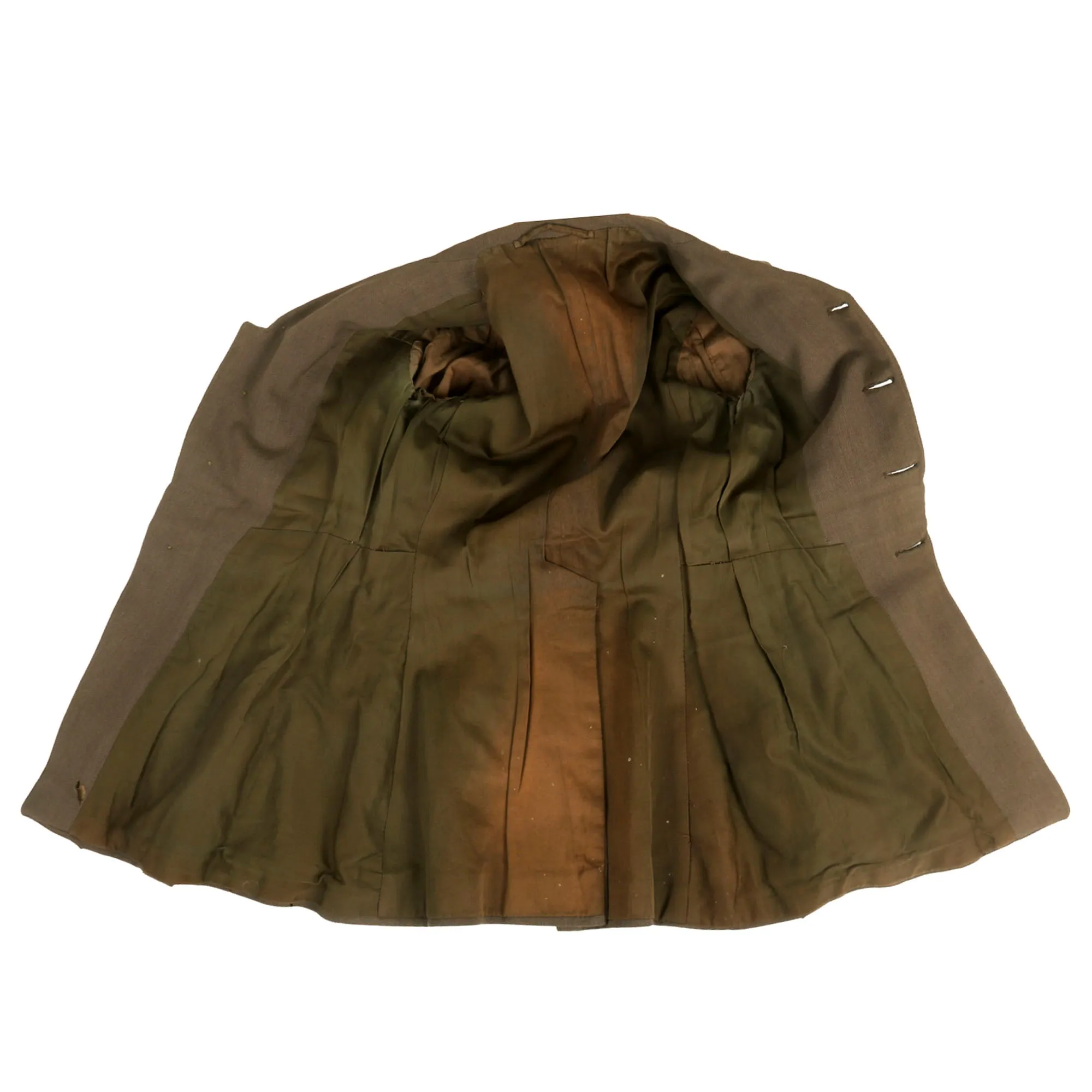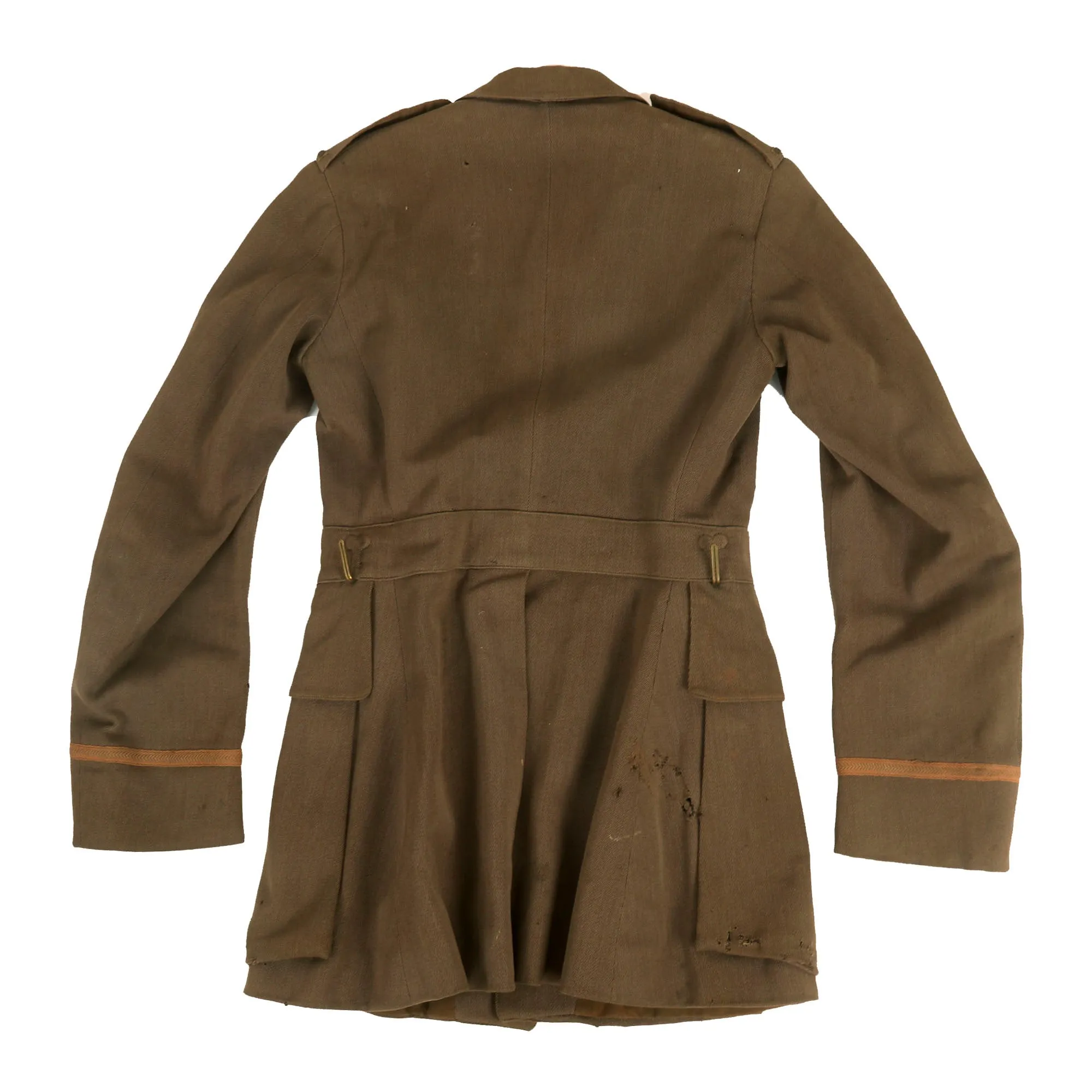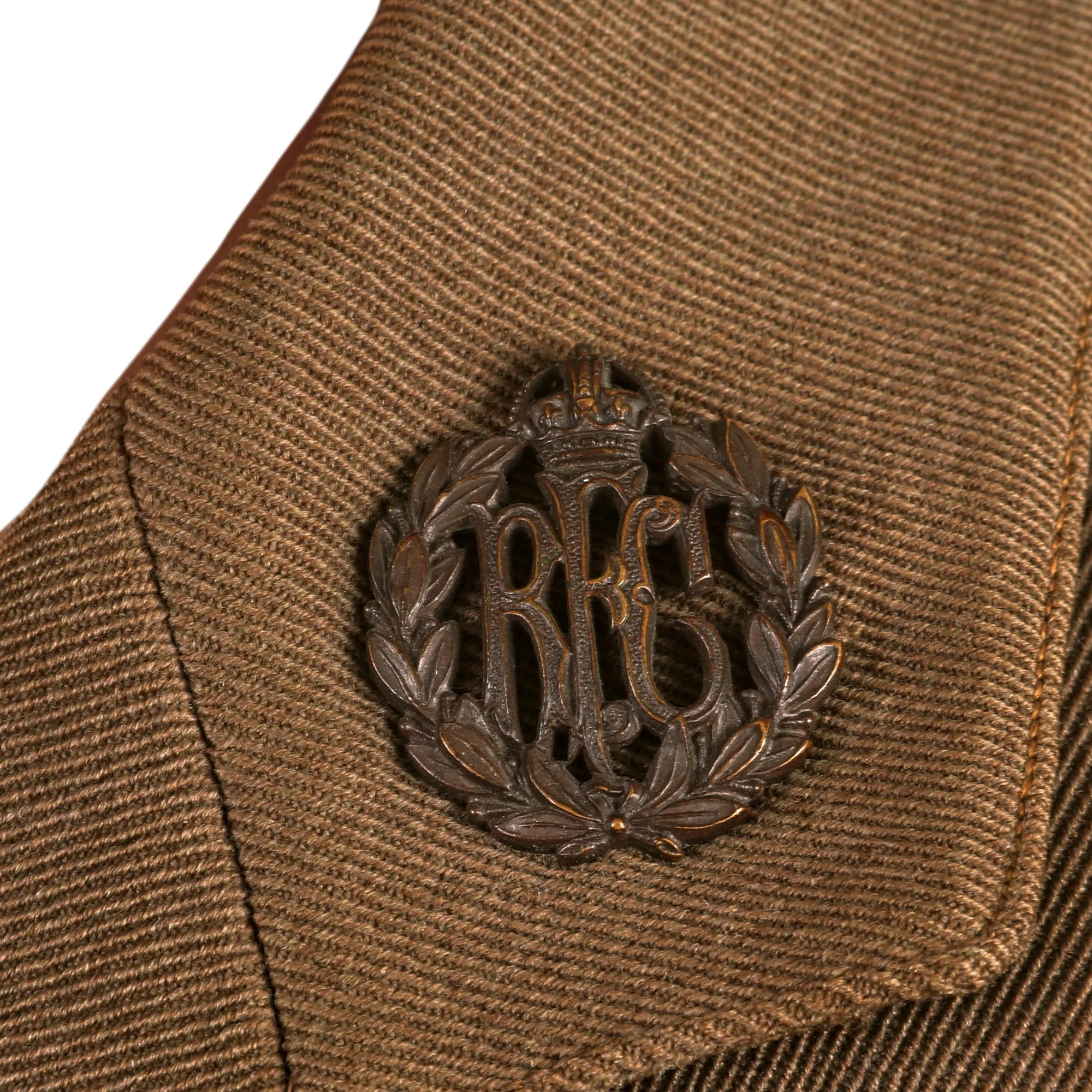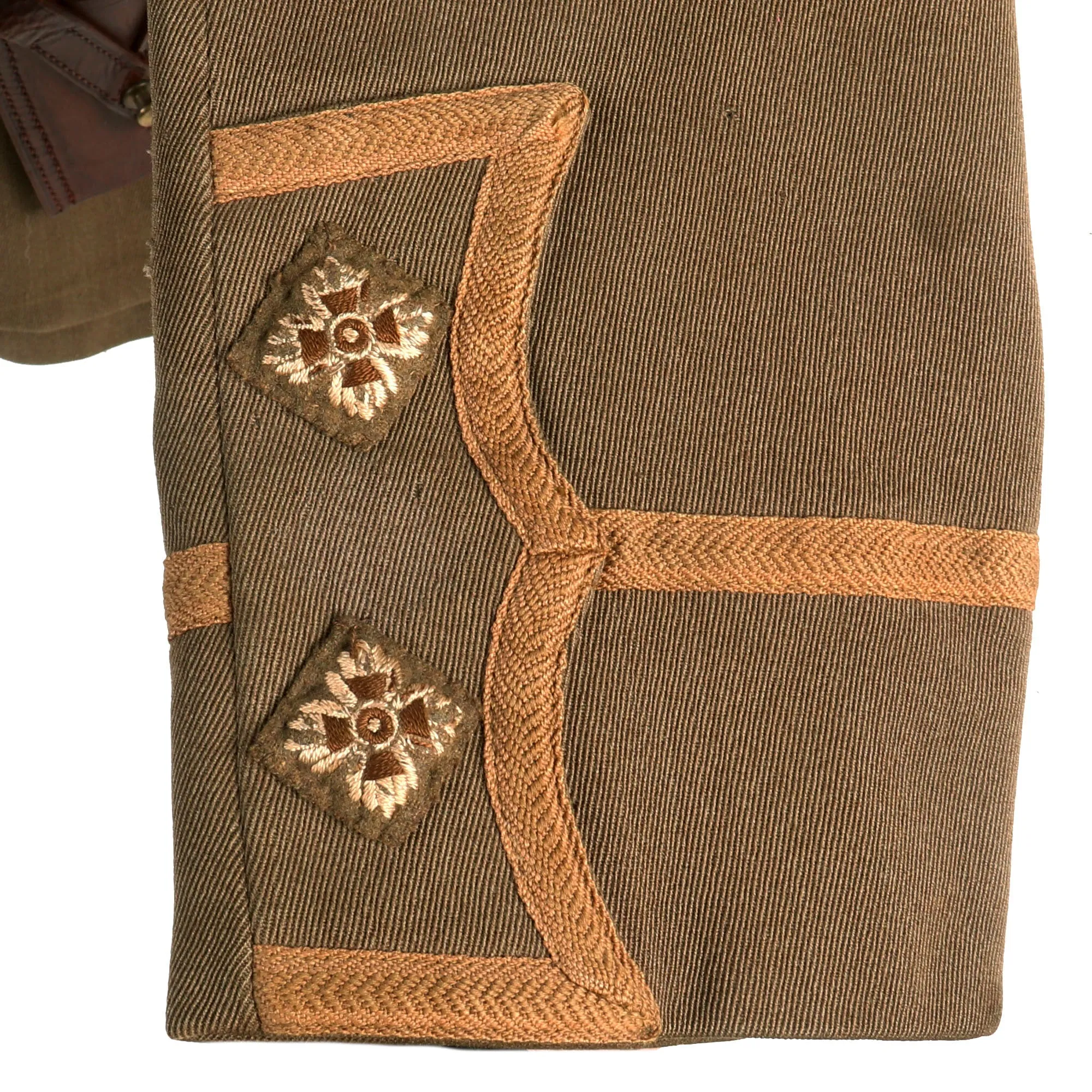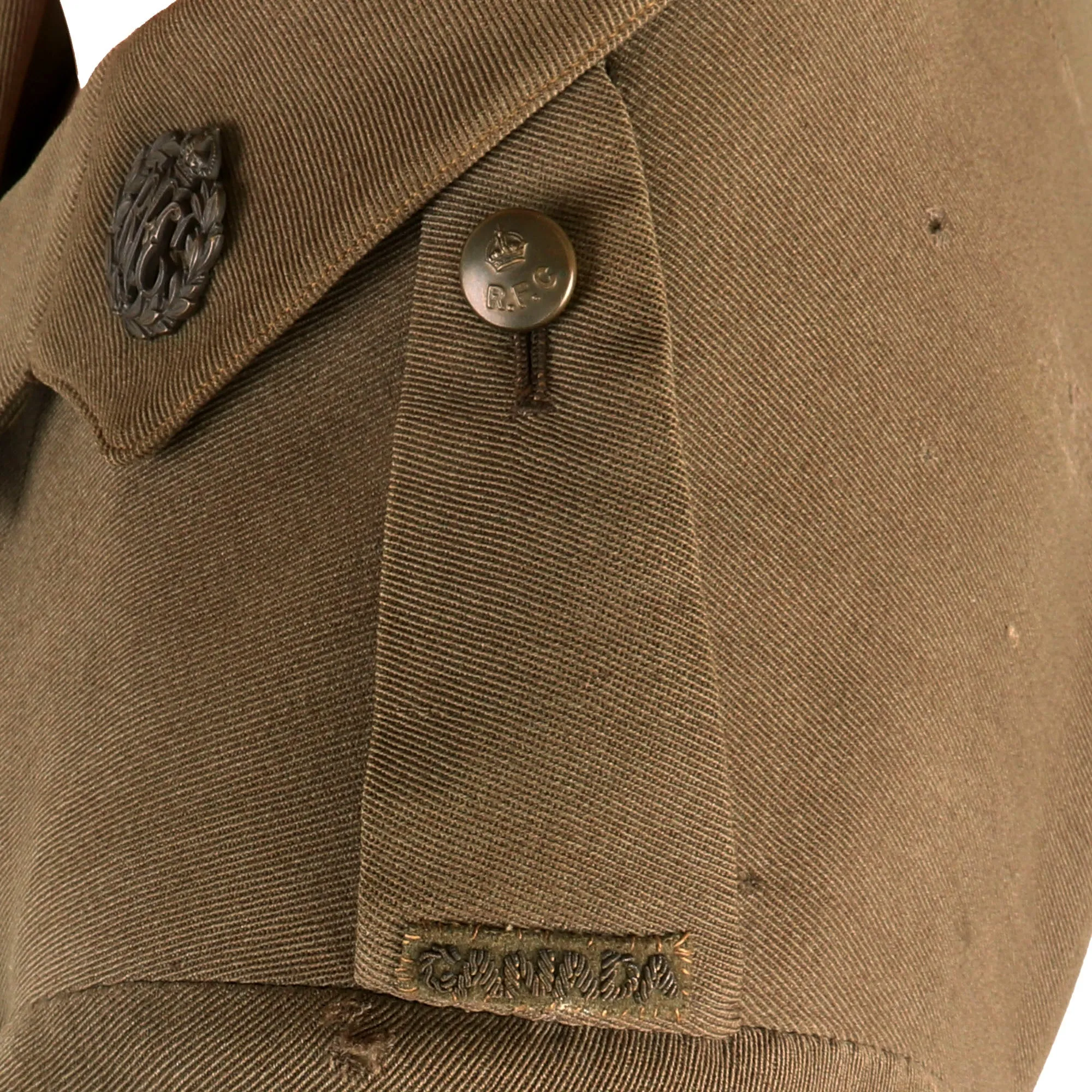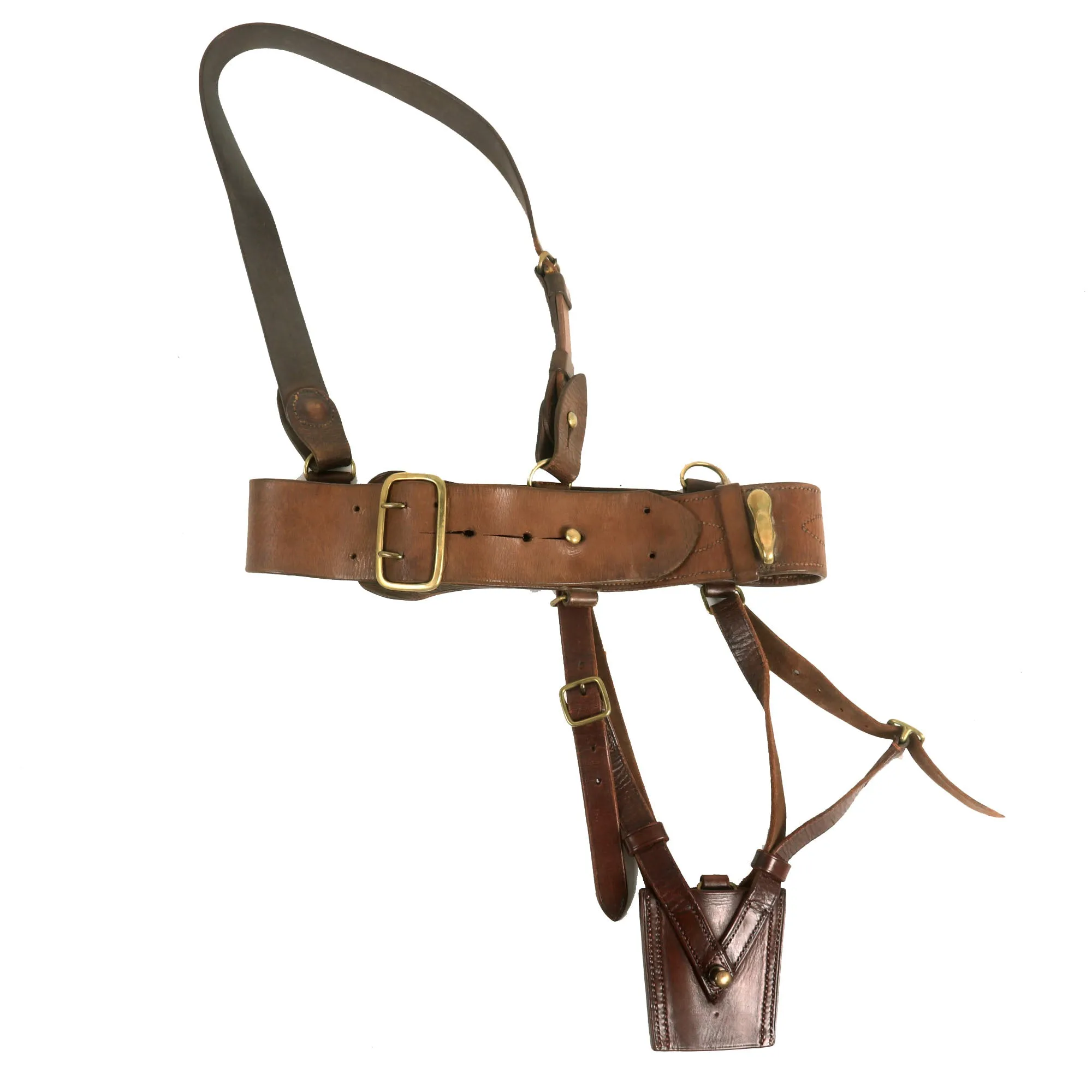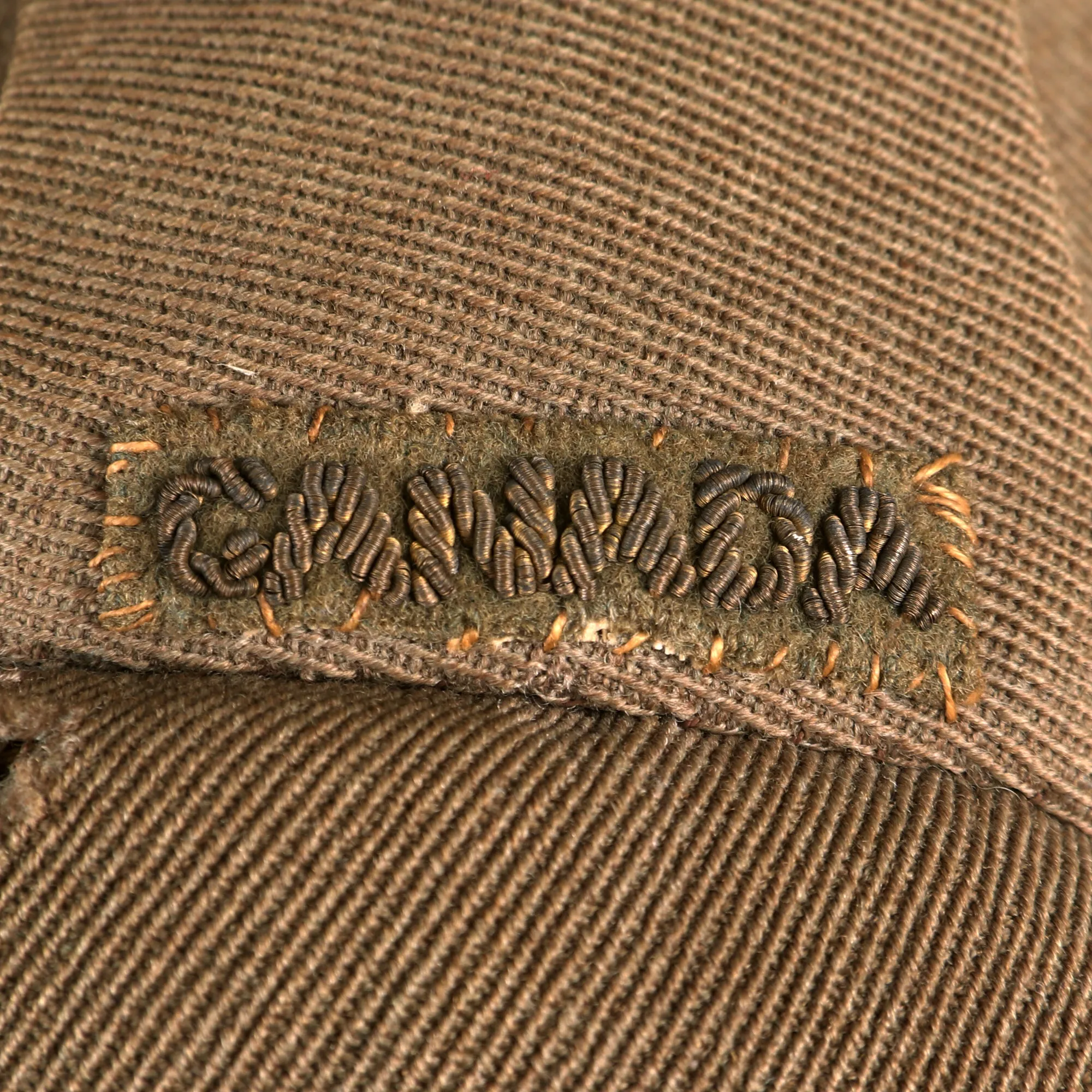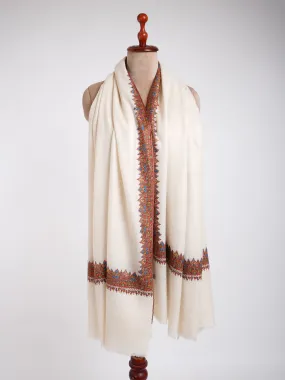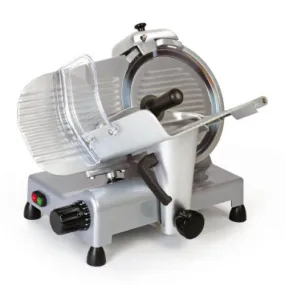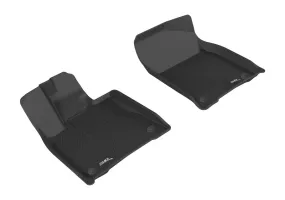Original Item: Only One Available: This is a phenomenally rare Canadian Royal Flying Corps Pilot’s cuff rank tunic. Not only are Canadian RFC items insanely rare to come across, but cuff rank tunics are one of the most difficult models of WWI British uniforms to find. This is one of the greatest WWI Commonwealth uniforms we have ever offered.
This is a very rare pre-1916 model British officer’s cuff rank tunic for a Canadian Lieutenant Pilot in the Royal Flying Corps. The tunic has bullion CANADA insignia on both shoulders, Royal Flying Corps insignia on both sides of the collar, and a set of Royal Air Force pilot’s wings above the left breast. The uniform has all Royal Flying Corps buttons, and there are Lieutenant cuff ranks on both cuffs. There is moderate mothing on the bottoms of the bottom two pockets, light mothing on the bottoms of the top two pockets, and very light mothing across the uniform.
The pilot’s wings on this uniform are for the Royal Air Force (RAF), which was formed on April 1st, 1918, merging and replacing the then separate Royal Flying Corps (RFC) and Royal Naval Air Service (RNAS).
There is no name associated with the uniform that we could find. The officer’s cuff rank tunic is one of - if not - the most iconic uniform models of the First World War. This example further subverts expectations with its use by a Canadian pilot in the Royal Flying Corps.
Also included is the original WWI British Sam Brown belt with attached sword hanger. The belt is in great stiff shape and displays very well on the uniform. This is one of the most phenomenal British uniforms we have offered, and will easily become the centerpiece of any Aviation or Militaria collection.
The Royal Flying Corps
The Royal Flying Corps (RFC) was the air arm of the British Army before and during the First World War until it merged with the Royal Naval Air Service on 1 April 1918 to form the Royal Air Force. During the early part of the war, the RFC supported the British Army by artillery co-operation and photographic reconnaissance. This work gradually led RFC pilots into aerial battles with German pilots and later in the war included the strafing of enemy infantry and emplacements, the bombing of German military airfields and later the strategic bombing of German industrial and transport facilities.
At the start of World War I the RFC, commanded by Brigadier-General Sir David Henderson, consisted of five squadrons – one observation balloon squadron (RFC No 1 Squadron) and four aeroplane squadrons. These were first used for aerial spotting on 13 September 1914 but only became efficient when they perfected the use of wireless communication at Aubers Ridge on 9 May 1915. Aerial photography was attempted during 1914, but again only became effective the next year. By 1918, photographic images could be taken from 15,000 feet and were interpreted by over 3,000 personnel. Parachutes were not available to pilots of heavier-than-air craft in the RFC – nor were they used by the RAF during the First World War – although the Calthrop Guardian Angel parachute (1916 model) was officially adopted just as the war ended. By this time parachutes had been used by balloonists for three years.
On 17 August 1917, South African General Jan Smuts presented a report to the War Council on the future of air power. Because of its potential for the 'devastation of enemy lands and the destruction of industrial and populous centres on a vast scale', he recommended a new air service be formed that would be on a level with the Army and Royal Navy. The formation of the new service would also make the under-used men and machines of the Royal Naval Air Service (RNAS) available for action on the Western Front and end the inter-service rivalries that at times had adversely affected aircraft procurement. On 1 April 1918, the RFC and the RNAS were amalgamated to form a new service, the Royal Air Force (RAF), under the control of the new Air Ministry. After starting in 1914 with some 2,073 personnel, by the start of 1919 the RAF had 4,000 combat aircraft and 114,000 personnel in some 150 squadrons.
The Royal Air Force
The Royal Air Force (RAF) is the United Kingdom's air and space force. It was formed towards the end of the First World War on 1 April 1918, becoming the first independent air force in the world, by merging the Royal Flying Corps (RFC) and the Royal Naval Air Service (RNAS). Following the Allied victory over the Central Powers in 1918, the RAF emerged as the largest air force in the world at the time. Since its formation, the RAF has played a significant role in British military history. In particular, during the Second World War, the RAF established air superiority over Hermann Göring's Luftwaffe during the Battle of Britain, and led the allied strategic bombing effort.
The RAF's mission is to support the objectives of the British Ministry of Defence (MOD), which are to "provide the capabilities needed to ensure the security and defense of the United Kingdom and overseas territories, including against terrorism; to support the Government's foreign policy objectives particularly in promoting international peace and security". The RAF describes its mission statement as "... [to provide] an agile, adaptable and capable Air Force that, person for person, is second to none, and that makes a decisive air power contribution in support of the UK Defence Mission". The mission statement is supported by the RAF's definition of air power, which guides its strategy. Air power is defined as "the ability to project power from the air and space to influence the behavior of people or the course of events".
Today, the Royal Air Force maintains an operational fleet of various types of aircraft, described by the RAF as being "leading-edge" in terms of technology. This largely consists of fixed-wing aircraft, including those in the following roles: fighter and strike, airborne early warning and control, intelligence, surveillance, target acquisition, and reconnaissance (ISTAR), signals intelligence (SIGINT), maritime patrol, air-to-air refueling (AAR) and strategic & tactical transport. The majority of the RAF's rotary-wing aircraft form part of the tri-service Joint Helicopter Command in support of ground forces. Most of the RAF's aircraft and personnel are based in the UK, with many others serving on global operations (principally over Iraq and Syria) or at long-established overseas bases (Ascension Island, Cyprus, Gibraltar, and the Falkland Islands). Although the RAF is the principal British air power arm, the Royal Navy's Fleet Air Arm and the British Army's Army Air Corps also operate armed aircraft.




